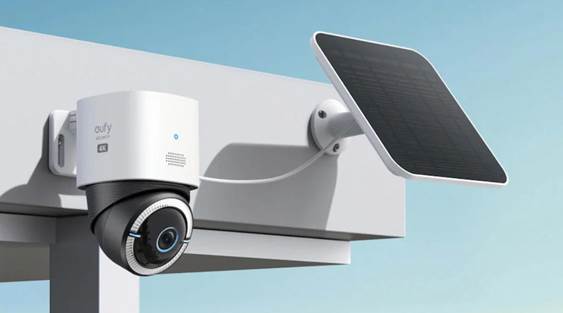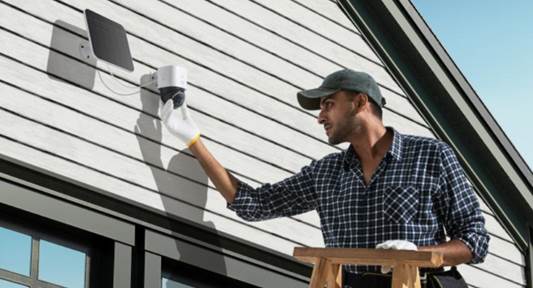Security
cameras play a vital role in safeguarding our homes and businesses.
Understanding the costs associated with their installation helps you optimize
your investment. Key considerations include types of camera systems, how many
cameras you need, and your property’s layout. The choice between DIY and professional installation also influences cost and
effectiveness. Unseen expenses can surprise you, but smart strategies can slash
costs without sacrificing security. Exploring these elements helps you make
informed decisions, ensuring your property stays secure without breaking the
bank. Let’s delve into these critical aspects, offering a clear guide to
aligning your security needs with your budget.

Key
Factors That Impact Security Camera Installation Costs
Price
fluctuation for security camera setups arises from several factors. The type of
camera system is paramount, affecting both the initial outlay and long-term
expenses. Additionally, the number of required cameras and the area they cover
play crucial roles. Complex property layouts can escalate costs due to
increased labor and advanced equipment needs. Each factor intertwines with the
others, influencing how much you’ll ultimately spend. With a clear grasp of
what drives these costs, you’re better positioned to plan effectively and
ensure optimal security within your financial scope.
Camera
System Type
Selecting
the right camera system is a primary factor in cost determination. Options
range from basic analog systems to high-definition IP cameras with smart
features. Analog systems usually offer a lower upfront cost, but they may lack
advanced functionalities and clarity, impacting effectiveness. Conversely, IP
camera systems, while more expensive initially, provide superior image quality,
remote access, and smart detection features. Consider your specific needs, such
as night vision capability or weather resistance, which might also drive costs
upwards. Furthermore, investing in a hybrid system can offer flexibility,
blending cost-effective analog cameras with high-tech IP ones in crucial areas.
Making an informed choice in camera type can balance your budget against the
desired functionality.
Number
of Cameras & Scope
The
number of cameras needed and the coverage area significantly impact
installation costs. More cameras mean higher equipment and labor costs.
Assessing strategic locations for camera placement can help optimize coverage
without unnecessary spending. Larger properties may require more cameras to
eliminate blind spots, increasing expenses. Conversely, a smaller, well-planned
system could suffice for smaller premises, ensuring adequate surveillance
without excess. Understanding the property’s vulnerabilities allows you to
position cameras effectively, providing comprehensive coverage. This strategic
approach means investing only in essential equipment, maximizing your budget’s
potential, and ensuring efficient
security without overspending.
Installation
Complexity & Property Layout
Complex
installations often lead to higher costs due to increased labor and specialized
equipment needs. Intricate property layouts, including multi-story buildings
and expansive outdoor areas, present unique challenges. Technicians might need
to run extensive wiring, drill through walls, or navigate difficult access
points, each adding labor time and cost. Additionally, specific aesthetic
requirements or the need for hidden cables can elevate installation complexity.
Simplifying layouts where possible, such as opting for wireless systems, can
reduce these costs. Understanding your property in detail allows you to
anticipate these challenges and allocate budget accordingly, ensuring efficient
and effective installation.

DIY
vs. Professional Installation: Which Has the Advantages?
Choosing
between DIY and professional installation depends on budget, skill, and
security needs. DIY installation offers cost savings as it eliminates labor
charges. Many modern systems come with user-friendly setup guides, making them
accessible for tech-savvy individuals. However, improper installation can
compromise security, leading to blind spots or malfunctioning equipment.
Professional installation ensures expert placement and setup, optimizing system
performance. Technicians can customize solutions, address unique property
challenges, and offer warranties, providing peace of mind. While costlier, the
professional route guarantees thorough security system integration. Weighing
the benefits and drawbacks of each method helps determine the best fit for your
security goals and financial plan.
The
Hidden Costs of Installing Security Cameras
Beyond
initial purchases and installation, hidden expenses can surprise. Maintenance
costs, including software updates and potential repairs, should be budgeted.
Also, consider potential fees for data storage, especially with cloud-based
systems. Subscription services, if opted for additional features, add to
long-term financial considerations. Some properties may require permits for
camera placement, resulting in extra fees. Ignoring these potential costs can
lead to a budget overrun. Being
proactive with a comprehensive financial plan that addresses ongoing operation
and maintenance ensures sustained system performance, helping avoid unexpected
financial strain while maintaining security efficacy.
Tips
to Save on Installation Costs Without Compromising Security
To
save on installation without sacrificing security, start with a thorough
security assessment to identify priority areas, limiting unnecessary camera
purchases. Wireless systems can mitigate extensive cabling costs, suitable for
simple property layouts. Evaluating hybrid systems offers savings by blending
high-tech monitoring where needed and cost-effective solutions elsewhere. Seek
package deals or discounts from security suppliers for bulk purchases. Choosing
a local installer might reduce travel-related expenses. Negotiating maintenance
packages at installation purchase can lock in lower service rates long-term.
Smart planning and negotiation enhance installation efficiency, ensuring robust
security within your financial parameters.
Conclusion
Understanding
the factors influencing security camera installation costs empowers property owners to make informed
decisions. Balancing the type of system, number of cameras, and installation
challenges with budget considerations is crucial. Weighing DIY against
professional installation helps tailor your approach based on skills and
financial flexibility. Recognizing hidden costs ensures comprehensive budget
planning, preventing unexpected expenses. Employing cost-saving strategies
maintains security integrity without going over budget. A proactive approach to
system selection and installation optimizes both security coverage and
financial investment, keeping properties safe and secure efficiently.
